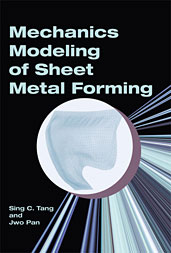Technical Paper
Tailor-Welded Aluminum Blanks for Liftgate Inner
2007-04-16
2007-01-0421
Tailor welded steel blanks have long been applied in stamping of automotive parts such as door inner, b-pillar, rail, sill inner and liftgate inner, etc. However, there are few known tailor welded aluminum blanks in production. Traditional laser welding equipment simply does not have the capability to weld aluminum since aluminum has much higher reflectivity than steel. Welding quality is another issue since aluminum is highly susceptible to pin holes and undercut which leads to deterioration in formability. In addition, high amount of springback for aluminum panels can result in dimension control problem during assembly. A tailor-welded aluminum blank can help reducing dimension variability by reducing the need for assembly. In this paper, application of friction stir and plasma arc welded blanks on a liftgate inner will be discussed.

